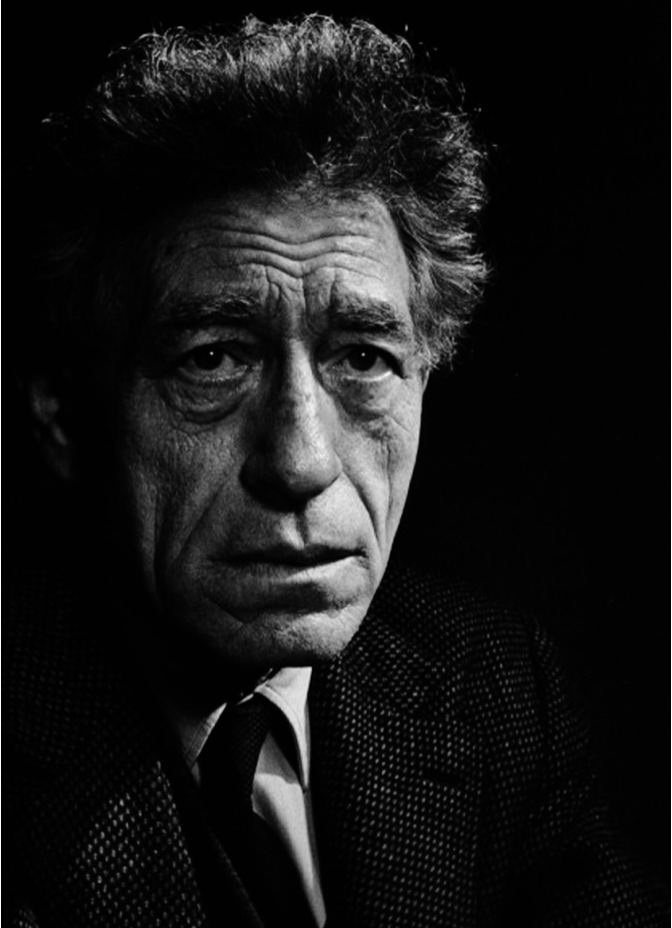Home
Artists
Alberto Giacometti
Alberto Giacometti
Alberto Giacometti was a Swiss sculptor and painter, famed for his trademark sculptural technique of rough, eroded and consumed surfaces. Born in 1901 into a family of artists, Giacometti also produced often overlooked prints and drawings which poignantly continue his search to identify man’s place in the modern world.

Interested in Alberto Giacometti?
About the Artist
Alberto Giacometti was a Swiss sculptor and painter, famed for his trademark sculptural technique of rough, eroded and consumed surfaces. Born in 1901 into a family of artists, Giacometti also produced often overlooked prints and drawings which poignantly continue his search to identify man’s place in the modern world.
A keen artist from an early age, Giacometti attended the Geneva School of Fine Arts. Crucially, in 1920 he went to Italy where he became acquainted with Renaissance masters and explored the Florentine collections of ancient Egyptian art, which would remain an integral inspiration for his aesthetic. Giacometti moved to Paris in 1922 where he conducted his studies with sculptor Antoine Bourdelle and associated with influential artists such as Joan Miró, Max Ernst, Pablo Picasso, Bror Hjorth and Balthus.
The Paris of the 1920s was a fertile artistic scene, fermenting with parallel developments in the aesthetic and intellectual worlds. The young Giacometti came into contact not only with the transformative figures of Cubism and Surrealism, but also with profound existential and phenomenological questions about the human condition and the possibilities of perception. Inspired by the writings of philosopher Georges Bataille who discussed metaphysics, eroticism and the power of vision, Giacometti interpreted the values of Surrealism through a personal lens.
In the years before the war, Giacometti increasingly moved away from the oneiric figurations of Surrealism, concentrating instead on an idiosyncratic rendition of anatomical forms. The human head and the gaze became sites on which he could explore the possibilities of communication. This intellectual research is reflected in the stark changes in Giacometti’s works. His sculptures progressively elongated and stretched out, increased in height but diminished in width.
Following the war, Giacometti’s interests in theories of vision combined with a new awareness of alienation and collective anxieties. These concerns materialised in evocative sculptures and paintings in which the human figure becomes a symbol of trauma. Resisting the ubiquity of abstraction, Giacometti obstinately persisted in his quest for a bare figuration, endlessly returning to his gangly, scrawny bronze figures. Fragile but dynamic, enigmatic but suggestive, they constitute a visual manifestation of existentialist philosophy.
Giacometti expressed the human condition in his painted portraits, in which isolated figures seem to fade away, as if consumed by continued reworking. Such is seen in ‘Grey Figure’ (1957), in which the artist limited himself to grey, the colour “that I feel, that I see, that I want to reproduce”. Understood through Jean-Paul Sartre’s essay which celebrates the artist’s skill at expressing how man experiences space, here a rough, broken line isolates the figure in an empty, cell-like space as the figure appears to dematerialise. Gaps in the demarcation of the figure’s outline make the subject appear to dissolve into the surrounding space while the monochrome palette further collapses the separation between figure and ground. The barely defined figure acquires a hallucinatory quality, fluctuating between states of being and nothingness, communicating an existential agony that resonates through his entire post-war oeuvre.
Giacometti died in 1966, working on his sculptures and paintings until his very last breath but his legacy lives on, in part through the HENI prints produced in collaboration with his estate, which brings the spectator up close to the tortured surfaces of his paintings. His endless repetitions of the same figures are telling of his continued struggle to capture life and give it meaning. Such desires seem to remain unfulfilled: his art conveys utter loneliness and embodies the struggle to communicate with others.



